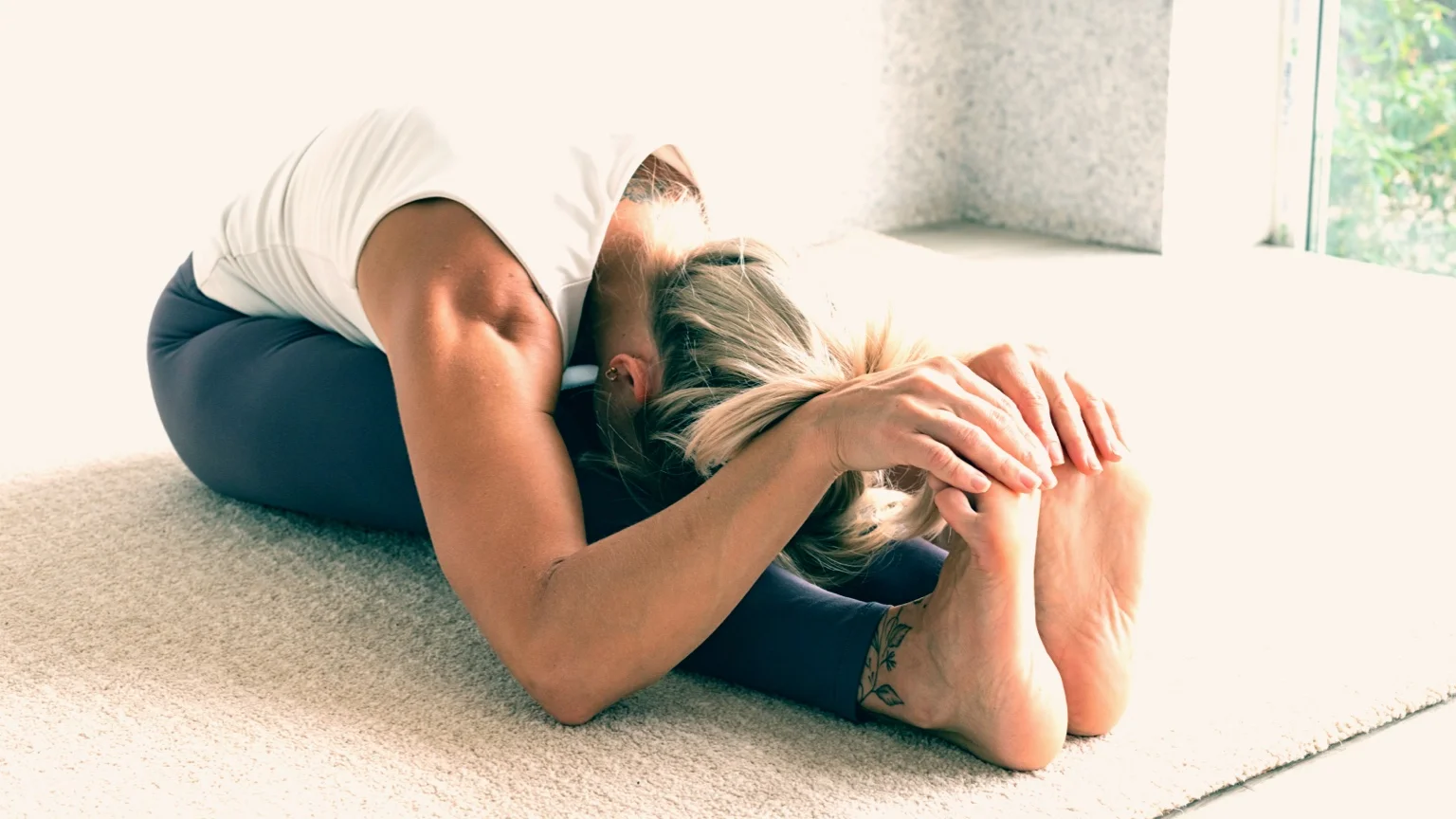Caterpillar Pose (Paschimottanasana, Yin Yoga Forward Bend)

The Caterpillar Pose, also known as Yin Yoga Forward Bend or Paschimottanasana is a seated yoga pose. In this pose, you extend your legs straight out in front of you, and let your upper body gently fold over your legs. You then extend your arms to reach your toes, with your head pointed down towards your knees. The Caterpillar Pose provides a deep stretch along your entire back. The pose imitates the small size and stillness of a caterpillar before it transforms into a butterfly form.
- Position: Seated.
- Stretched body parts: Spine, shoulders, hamstrings and lower back.
- Benefits: The Caterpillar Pose can help calm the mind and relieve stress. Because of it’s forward leaning position, it also stimulates the abdominal organs which can help with digestion.
- Symbolism: With the back representing past times, this pose symbolizes the release of the past, and the yielding to the present moment.
- Similar poses: Forward Fold (Uttanasana), Child’s Pose (Balasana).
Meaning of Paschimottanasana
The word “Paschimottanasana” comes from the Sanskrit words “Paschima”, “Uttana” and “Asana”. “Paschima” means “west” or “back”, “Uttana” means “intense stretch” and “Asana” means “pose”. Together, these words form the term “Paschimottanasana” which has a literal meaning of “Intense Back Stretching Pose”.
Spiritually, the back represents the past and some yogis believe that by stretching the back with this pose, you are encouraged to let go of past burdens and tensions. The pose is likened to a caterpillar that withdraws into its cocoon for transformation, indicating the potential for personal growth and transformation that comes from introspection and self-awareness.
How to do The Caterpillar Pose

- Sit on a yoga mat with your legs fully extended in front of you.
- Keep your back upright and your shoulders relaxed.
- Take a deep breath then, exhaling, bend forwards from your hips. Keep your spine long and chest open as you bend forwards.
- Reach out your arms towards your feet.
- Hold the pose for 5-10 breaths.
- To exit the pose, slowly roll your body up until you are sitting upright again.
Variations
- For extra support: If needed, you can place a folded blanket under your knees. This will take strain off your hamstrings as well as your lower back.
- Easier pose: Instead of reaching for your feet, simply rest your hands on your shins or knees. You can also use a yoga strap around your feet to make it easier to reach.
- More challenging: Instead of resting your hands on your feet, extend them out in front of you parallel with the floor. This will require more control and engage your arm muscles to hold the position.
Tips
- Don’t force your bend forwards. Use gravity to help you bend forwards, and relax slowly into the position.
- Keep your neck relaxed during the pose.
- If you have tight hamstrings, it’s okay to keep your knees bend a little during the pose.
Prep poses
- Child’s Pose (Balasana) – This pose gently stretches your spine and prepares you for the more intense stretch in The Caterpillar Pose.
- Downward-Facing Dog (Adho Mukha Svanasana) – Downward-Facing Dog stretches your hamstrings and encourages you to lengthen your spine, which prepares you for a more intense pose.
- Standing Forward Bend (Uttanasana) – Stretches your hamstrings and opens up your hip joint.
- Staff Pose (Dandasana) – Encourages proper posture and alignment of your spine in the seated position.
- Head-to-Knee Forward Bend (Janu Sirsasana) – This is a similar pose to The Caterpillar Pose, and in a similar way stretches your hamstrings, lengthens your spine. In this pose, though, you open up your hip, promoting hip flexibility.
